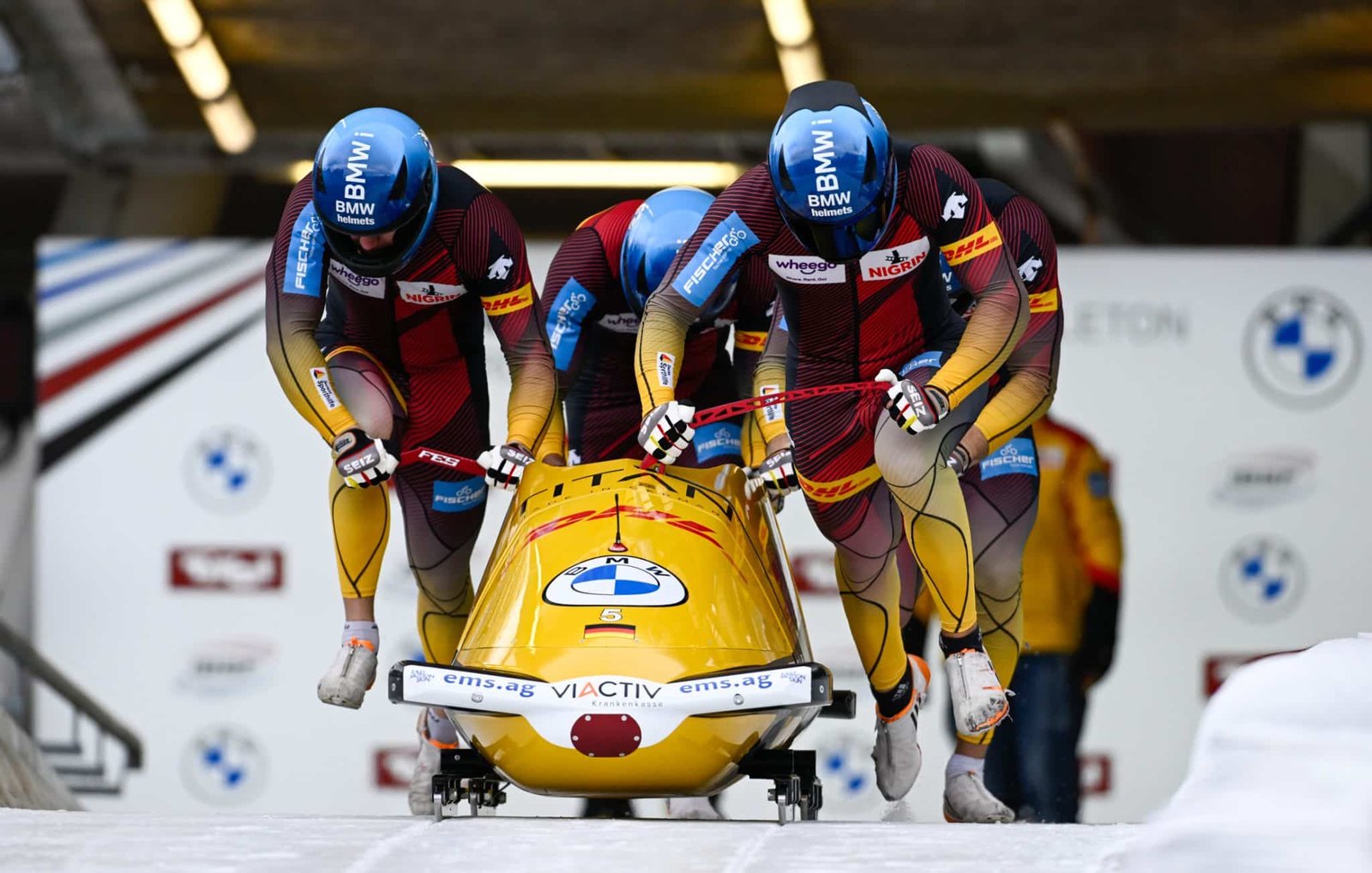The Bobsleigh and Sled Association for Germany (BSD) is about to start a new season with two big highlights for the home audience: the FIL Luge World Championships (January 22nd to 28th, 2024, Altenberg) and the BMW IBSF World Championship in Bobsleigh and Sleigh Driving Skeleton (February 19 to March 3, 2024, Winterberg). The BSD would like to continue its success story in the World Cup and at major international events and is building on the technology partnership with the BMW Group that has existed since 2010 and is getting support from metal 3D printing.
Those disciplines in which the material plays an important role – such as luge, bobsleigh and skeleton sports – particularly benefit from the expertise, technological possibilities and innovative strength of the BMW Group in the automotive industry and motorsport. At the BSD season opening press conference today at the BMW Dresden branch, the two projects that are the focus of BMW technology transfer this season were presented: the “BMW data trainer” in tobogganing and spike plates for shoes in bobsleigh. The leader specifically focused on BMW’s know-how and capabilities in the area of additive metal manufacturing.
Getting started with bobsleigh with 3D printing
It’s no secret that start times play a very important role in bobsleighing, as they determine the speed at which the sleigh enters the rink – there is no “accelerator” for this. In order to convert the athletes’ athletic abilities into the acceleration of the sports equipment when pushing on the ice, the right footwear is required. Power is transmitted exclusively via spike plates on the forefoot soles. There are more than 250 small, sharp teeth per shoe that have to exert enormous force on the ice. Improvements to these plates lead directly to optimization of performance in the ice rink.
It is once again the technology transfer from automobile development and production that BMW and BSD have been using for three years to continuously improve the spike plates. 3D printing has long been established as an innovative process – the technology experts at BMW have been relying on it since 1991 and have established 3D printing across the entire product life cycle, from the concept idea of a vehicle through production to spare parts.
This technology is perfect for spike plates in bobsleigh, which have so far only been available off the shelf. 3D printing opens up completely new possibilities. Performance factors such as geometry – where exactly are the spikes placed? – the number of struts and teeth as well as the weight can be varied efficiently, the spike plates can be printed quickly and inexpensively and tested by athletes. Until the optimal result is achieved. Nothing is standard anymore, on the contrary: thanks to the efficiency of the process, individual plates can be produced for every athlete. The ongoing optimizations should be completed by the 2026 Winter Olympics at the latest. The experts also attach importance to the stiffness of the plates and therefore the shoes – because not every athlete performs best with the same stiffness of the shoes.
Go even further with BMW
Another milestone on the way there was reached this year. Various materials are now available for 3D printing for the spikes, which athletes are testing. The use of special construction software is also new. It is used to optimize components for the vehicles, but also equipment for the BMW Group’s production facilities in the factories, in terms of weight and rigidity. This software also supports the BMW Group engineers in the design of the spike plates. It enables the rapid, automated and, above all, individually adapted creation of the respective 3D printing data. The parameters preferred by each athlete – such as geometry, stiffness, number and shape of spikes – are automatically incorporated into the design and adapted to the individual shoe. 3D scans of the athletes’ shoes serve as the basis. This algorithmic design process leads to enormous time savings and the greatest possible variability.
In the 2023/24 season, BMW will not only be present on the international ice channels as a technology partner of the BSD, but will also remain the title partner of the BMW IBSF Bobsleigh and Skeleton World Cup and the BMW IBSF Bobsleigh and Skeleton World Championships as well as the main sponsor of the FIL Luge World Cups and the FIL Luge World Championships.
